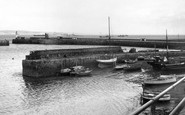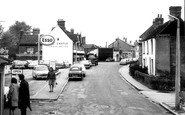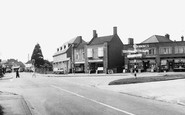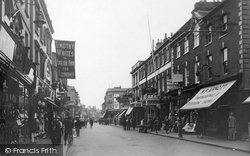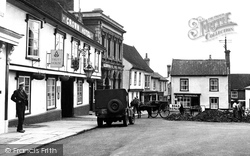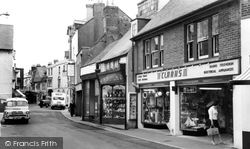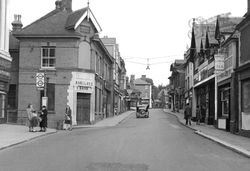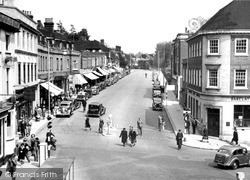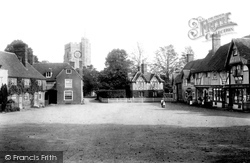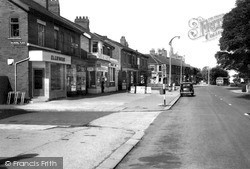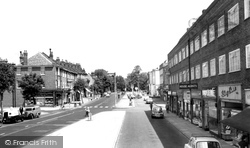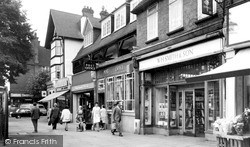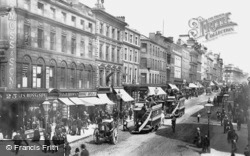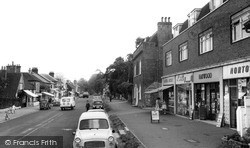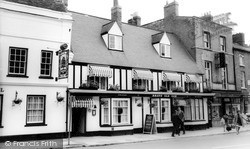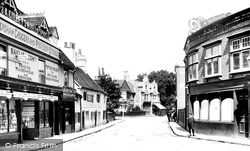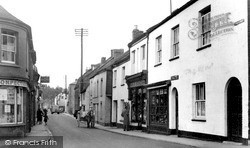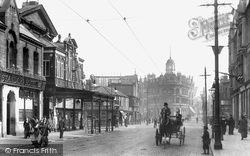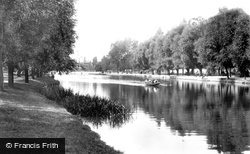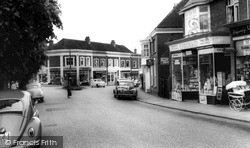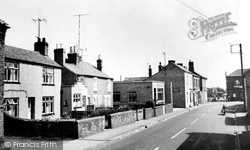Places
3 places found.
Those places high-lighted have photos. All locations may have maps, books and memories.
Photos
68 photos found. Showing results 1,221 to 68.
Maps
12 maps found.
Books
15 books found. Showing results 1,465 to 15.
Memories
7,562 memories found. Showing results 611 to 620.
Aber/Blaengwynfi Silver Prize Band Thankyou For The Music!
I grew up in Blaengwynfi in the 1950s/60s. My father was Don Davies, and he was band-master during most of those years. He'd joined the band in the 30s when he'd been forced to leave ...Read more
A memory of Blaengwynfi by
James Joseph Irvine (Autobiography) 1911 1990
Stretching over about a mile on the A68 road to Edinburgh from Darlington, lies the small mining town of Tow Law. Approaching it from Elm Park Road Ends, on a clear day, as you pass the various openings in ...Read more
A memory of Tow Law in 1930 by
The Old Quay, Newlyn
This photograph shows "The Old Quay" which was a medieval construction inside the outer arms of the Newlyn Harbour. Behind the Old Quay is the South Pier and the extreme end of the North Pier shows to the left of the picture (the ...Read more
A memory of Newlyn in 1955
Great Haseley
I was five when I moved to Great Haseley from Newington, near Stadhampton, with my mother, father and brother. The year was 1957 and Horse Close Cottages was a new housing estate - we were thrilled to have a bathroom and an inside ...Read more
A memory of Great Haseley by
My Memories
There is a museum inside this building which is only open to the public on certain days. This is one of my early memories of Healton Park, when I was a child my parents took me and my sister for a day out, to the park. Later we moved ...Read more
A memory of Prestwich in 2011
Born In 1956
i was born in Hadleigh in1956, my grandfather worked at Gallaghers butchers which from my memory was back this side of the Esso petrol station.
A memory of Hadleigh by
My Childhood
I believe that my maternal grandmother once lived in the pub called The Rising Sun. Her maiden name was Mary Alice Bellis - and my parents, sister and I visited the village during the 1930s. . We stayed with family who lived in the ...Read more
A memory of Rhydymwyn in 1930 by
Eastern Dene
Does anybody know anything about the history of Eastern Dene / Western Dene? I was told about the zoo that once stood on the site of the park primary/middle school, but I hear that a battle took place on Eastern/Western Dene. I lived ...Read more
A memory of Hazlemere in 1979 by
Pixton
My grandfather - Jim Williams - worked on the estate, he lived at Newbridge Lodge for many years. He took me with him to work one day when I was about 8 or 9 years old, I don't remember much apart from that they were cutting a hedge in ...Read more
A memory of Pixton Park by
Beckley Family Long Hanborough
My family can be traced to the 1700s and back to Robert Beckley. I hope to visit the area later this year to see where they lived. If anyone is related to Robert Beckley or any of his descendants I would love to ...Read more
A memory of Long Hanborough
Captions
2,501 captions found. Showing results 1,465 to 1,488.
Poole's population grew substantially during the 20th century as new industries arrived to supplement the declining merchant trade.
The jettied Crown Hotel (left) dates from c1550, with a Victorian mock-Tudor front. The central archway is now filled in with a wooden Gothic-style door.
Opposite the Vectis Tavern is Terminus Road, where the Newport to Cowes Railway Company built its station in 1862.
Leatherhead is, like Dorking, a town on the River Mole, but it has suffered much architectural loss in recent years.
This view looks east from the upper windows of the old Town Hall along Church Street.
Here we see the heart of what many claim is Kent's prettiest village: the tower of its 15th- century flint-stone church of St Mary looks down on this spacious square lined with half- timbered
The Lloyds Bank building (right), originally a pair of attached houses, was built about 1870 before the decorative façade was added in two stages.
The parade of shops (left) proclaims that a once quiet seaside village is becoming a busy township - we can see Ellwood's, the Midland Bank, a chemist, and a newsagent and tobacconist.
The Chequers Hotel (left) is still in business, but the Freeman, Hardy & Willis shoe shop next door has gone - the building is now used by Eastern Delight.
Here we see the heart of what many claim is Kent's prettiest village: the tower of its 15th-century flintstone church of St Mary's looks down on this spacious square lined with half-timbered Tudor and
The placename is derived from Haecc or gate. The village is on the north-west edge of Pinner Park, itself a 14th-century deer park owned by the Archbishop of Canterbury.
The shop front of W H Smith & Son is well-designed, and Barclay's Bank used a reticent, yet confident, typescript on their fascias.
Originally a narrow street of shops, houses and workshops, the redevelopment and widening of Market Street took place between 1822 and 1834 at a cost in excess of £250,000.
In the late 19th century the Square was called Hydro Terrace. The Midland Bank is on the left, with Stead & Simpson's shoe shop next door. Wide streets denote a planned town.
At first it was suggested that the railway station should be built adjacent to St Martin's Church in 'The Lordship' (see picture 53332A on pages 48-49), now known as Meadow Bank Recreation Ground
THE STRAND has always been at the heart of the town, where people met to trade as well as socialise. The market was central to the town's economy for centuries.
The driver of the Ford 300E van in the foreground has popped into Haywood's (right) for his morning newspaper. Next door is Sketchley's, the dry-cleaners, and Arthur Rickett.
The Brave Old Oak pub with its fake timber-framing is a Phipps House here, and had just been taken over by brewers Watney Mann.
Caversham boasts a famous bridge spanning the Thames, first recorded as long ago as 1231.
From North Curry, we skirt the south edge of West Sedge Moor to the town of Langport on the east bank of the River Parrett.
This is one of the main routes out of the city. Behind the horse and carriage is the old Yorkshire Penny Bank (1895). On the left is the Theatre Royal (1864), originally the Royal Alexandra Theatre.
Bedford grew up at a ford over the River Ouse before the arrival of the Anglo-Saxons in the mid to late 5th century AD. It is certainly the river that gives the town its character now.
The modern shops of Littleham are some distance away from the heart of the older village.
The Midland Bank is no more, but the flat-roofed building that sticks out like a sore thumb is still there.
Places (3)
Photos (68)
Memories (7562)
Books (15)
Maps (12)



